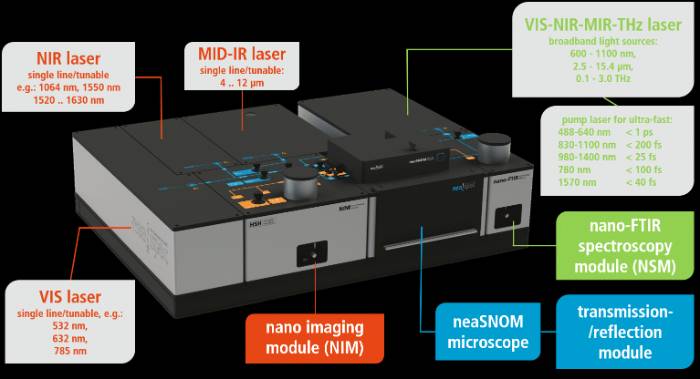LSU Faculty Awarded NSF Major Research Instrumentation Grant
Near-Field Optical Microscope Will be One of Only Three of its Kind
August 5, 2020
 BATON ROUGE, LA – Led by LSU Chemical Engineering Assistant Professor Kevin McPeak,
a team of LSU Engineering and Science faculty have been awarded a Major Research Instrumentation
grant of $665,000 from the National Science Foundation for the “Acquisition of a Near-Field
Optical Microscope for Multidisciplinary Research and Education at Louisiana State
University.”
BATON ROUGE, LA – Led by LSU Chemical Engineering Assistant Professor Kevin McPeak,
a team of LSU Engineering and Science faculty have been awarded a Major Research Instrumentation
grant of $665,000 from the National Science Foundation for the “Acquisition of a Near-Field
Optical Microscope for Multidisciplinary Research and Education at Louisiana State
University.”
The microscope, which will be installed in early 2021 at LSU’s Center for Advanced Microstructures and Devices facility, will enable researchers to study functional nanomaterials in both ultrafast time and nanoscale space regimes. This is important for understanding how nanomaterials function and help enable transformational advances in quantum computing, nanomedicine, energy and optoelectronics.
The instrument will also be one of only three near-field optical microscopes connected to synchrotrons—large machines that accelerate electrons to the speed of light—in the United States. Furthermore, it will have additional spectroscopy modes that the others do not, making it unique worldwide.
“[This microscope] is a major recruiting tool for both students and faculty, as well as driving external researchers to CAMD,” McPeak said. “BASF was part of this proposal, as well. BASF in Germany previously used a similar instrument to characterize the nanoscale properties of pharmaceuticals via a technique called nano-FTIR (or nano-Fourier-transform infrared spectroscopy), one of the techniques the instrument is capable of.
“Traditional FTIR spectroscopy allows scientists to study molecular vibrations and fingerprint specific chemicals but has a spatial resolution of microns. This low-spatial resolution is a problem for understanding nanomaterials, when often the behavior of a single structure needs to be studied. Nano-FTIR resolves this, providing 10 nanometer spatial resolution, allowing BASF and others to study the surface properties of individual nanostructures. We are excited to work with industrial partners on this tool.”
Installing the microscope at CAMD introduces synchrotron scientists to near-field optical microscopy and improves the overall depth of research training. In addition, its acquisition augments four upper-undergraduate and graduate-level courses in science and engineering, as well as NSF-sponsored Research Experience for Undergraduate sites at LSU.
McPeak is joined on the project by LSU faculty Louis Haber, associate professor of chemistry; James Dorman, assistant professor of chemical engineering; Christopher Arges, assistant professor of chemical engineering; and Omar Magana-Loaiza, assistant professor of physics.
The interconnectivity of the research team makes this multimodal near-field microscope a unifying instrument at LSU and allows for the development of new materials; observation and engineering of novel phenomena; and the exploration of applications in the fields of quantum computing, energy, optoelectronics, and nanomedicine.
The award is jointly funded by the NSF Division of Materials Research and Division of Chemical, Bioengineering, Environmental and Transport Systems.
Like us on Facebook (@lsuengineering) or follow us on Twitter and Instagram (@lsuengineering).
###
Contact: Joshua Duplechain
Director of Communications